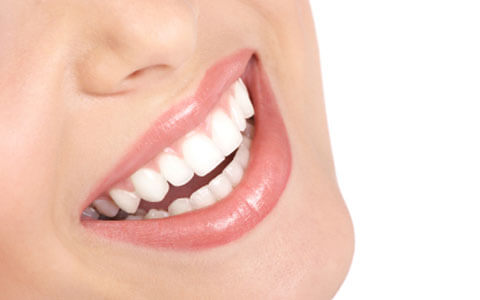Dental Terms
Hypodontia North York
Hypodontia and Anodontia in North York
Anodontia, also known as anodontia vera, is a rare genetic disorder characterized by the complete absence of all primary or permanent teeth. This condition is often associated with a group of skin and nerve syndromes referred to as ectodermal dysplasias. Anodontia is typically part of a syndrome and rarely occurs as an isolated condition.
Partial anodontia, commonly known as hypodontia or oligodontia, involves the congenital absence of one or more teeth. It's important to note that the congenital absence of all wisdom teeth, or third molars, is relatively common.
These conditions may affect either the primary or permanent sets of teeth, with most cases involving the permanent teeth. They are commonly associated with a group of non-progressive skin and nerve syndromes known as ectodermal dysplasias. Anodontia, in particular, is usually one component of a broader syndrome and is seldom found in isolation.
Recognizing Signs & Symptoms in North York
Anodontia is characterized by the partial or complete absence of teeth. Since all primary teeth typically emerge by the age of three, any absence of these teeth is usually noticed, prompting consultation with Dr. Mahwish Raza at Smiles at North York Dental in North York. With the exception of wisdom teeth, all permanent teeth should be visible by ages 12 to 14. Dental X-rays are usually taken if teeth have not appeared by the appropriate age.
When anodontia occurs, it may be accompanied by abnormalities in hair, nails, and sweat glands. In many instances, anodontia is a component of one of the ectodermal dysplasias, which are hereditary disorders. (For more information, you can explore Ectodermal Dysplasia as a search term in the Rare Disease Database.)
Understanding the Causes - North York
The complete absence of permanent teeth, known as anodontia, is exceptionally rare and is inherited as an autosomal recessive genetic trait. The exact location of the faulty gene responsible for anodontia has not yet been identified.
For the autosomal dominant form of hypodontia (HYD1), the malfunctioning gene has been traced to two distinct locations on two separate genes, specifically 14q12-q13 and 4p16.1. The autosomal recessive form (HYD2) is associated with a faulty gene at gene map locus 16q12.1.
There appear to be two forms of oligodontia as well. The more common form is caused by a mutation in a gene located at chromosome 14q12-13 and is inherited as an autosomal dominant trait. The other form, which is less prevalent and less well understood, is linked to a mutation at an unspecified location on the X-chromosome.
Chromosomes, which reside in the nucleus of human cells, carry the genetic information for each individual. Typically, human body cells contain 46 chromosomes. These chromosomes are organized into pairs, numbered from 1 to 22, with the sex chromosomes designated as X and Y. While males possess one X and one Y chromosome, females have two X chromosomes. Each chromosome comprises a short arm, denoted as "p," and a long arm, labeled as "q." Further subdivision into numerous bands with numerical designations allows for precise identification of the location of thousands of genes present on each chromosome. For instance, chromosome 14q12-13 refers to a specific position between bands 12 and 13 on the long arm of chromosome 14.
Recessive genetic disorders manifest when an individual inherits the same abnormal gene responsible for a particular trait from both parents. If an individual inherits one normal gene and one disease-associated gene, they become carriers of the disease but typically do not exhibit symptoms. The risk of both carrier parents passing on the defective gene and having an affected child stands at 25% with each pregnancy. The chance of having a child who is a carrier, like the parents, is 50% with each pregnancy. The probability of having a child with normal genes from both parents, free from the particular trait's genetic anomaly, is 25%. This risk remains the same for both males and females.
All individuals carry a few abnormal genes, and parents who are closely related (consanguineous) have a higher likelihood of both carrying the same abnormal gene. This increases the risk of having children with a recessive genetic disorder.
Dominant genetic disorders occur when the presence of a single copy of an abnormal gene is sufficient to cause the disease. The abnormal gene can be inherited from either parent or result from a new mutation (gene alteration) in the affected individual. The risk of passing on the abnormal gene from an affected parent to their offspring is 50% with each pregnancy, irrespective of the child's gender.
X-linked recessive genetic disorders arise due to an abnormal gene located on the X chromosome. Females have two X chromosomes, but one of them is inactivated, rendering all the genes on that chromosome inactive. Consequently, females who carry a disease gene on one of their X chromosomes are considered carriers of the disorder. Carrier females usually do not display symptoms because it's typically the X chromosome with the defective gene that is inactivated. In contrast, males have one X chromosome, and if they inherit an X chromosome containing a disease gene, they will develop the disease. Males with X-linked disorders transmit the disease gene to all their daughters, who become carriers, while they do not pass on the X-linked gene to their sons. Instead, they always transmit their Y chromosome to male offspring. Female carriers of an X-linked disorder have a 25% chance with each pregnancy of having a carrier daughter like themselves, a 25% chance of having a non-carrier daughter, a 25% chance of having a son affected by the disease, and a 25% chance of having an unaffected son.
X-linked dominant genetic disorders, on the other hand, are also caused by an abnormal gene on the X chromosome. In these rare conditions, females with an abnormal gene are affected by the disease. Affected males with this type of disorder are often more severely affected than affected females, and many affected males do not survive.
Prevalence and Affected Populations
Anodontia is a condition present at birth and affects both males and females equally.
Exploring Related Disorders
Ectodermal Dysplasias represent a group of hereditary, non-progressive syndromes in which the affected tissues primarily derive from the ectodermal germ layer during fetal development. These disorders involve the skin, its derivatives, and certain other organs. A predisposition to respiratory infections, attributed to a somewhat weakened immune system and faulty mucous glands in specific parts of the respiratory tract, stands out as the most severe characteristic of this group of disorders. (For further information, you can search for Ectodermal Dysplasia in the Rare Disease Database.)
Diagnosis and Treatment - North York
The diagnosis of anodontia can be confirmed through dental X-rays.
T reatment for anodontia primarily involves the use of artificial dentures. In cases where only front teeth are missing, as seen in hypodontia or oligodontia, a flexible system that allows slight movement of a bridge can be created by bonding an acrylic tooth to the supporting structure (abutments) using three orthodontic wires.


